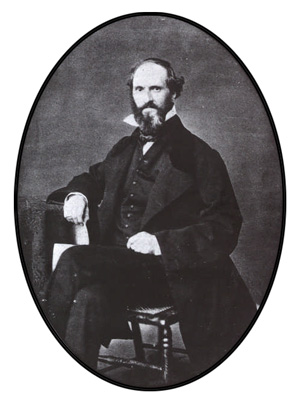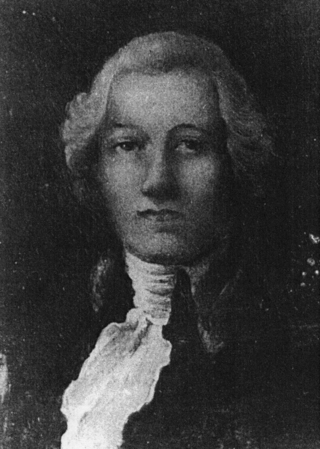
Richard Spruce was an English botanist specializing in bryology. One of the great Victorian botanical explorers, Spruce spent 15 years exploring the Amazon from the Andes to its mouth, and was one of the first Europeans to visit many of the places where he collected specimens. Spruce discovered and named a number of new plant species, and corresponded with some of the leading botanists of the nineteenth century.

Nicotiana glauca is a species of flowering plant in the tobacco genus Nicotiana of the nightshade family Solanaceae. It is known by the common name tree tobacco. Its leaves are attached to the stalk by petioles, and its leaves and stems are neither pubescent nor sticky like Nicotiana tabacum. It resembles Cestrum parqui but differs in the form of leaves and fusion of the outer floral parts. It grows to heights of more than two meters.

The University of California Botanical Garden is a 34-acre botanical garden located on the University of California, Berkeley campus, in Strawberry Canyon. The garden is in the Berkeley Hills, inside the city boundary of Oakland, with views overlooking the San Francisco Bay. It is one of the most diverse plant collections in the United States, and famous for its large number of rare and endangered species.

Katherine Esau was a pioneering German-American botanist who studied plant anatomy and the effects of viruses. Her books Plant Anatomy and Anatomy of Seed Plants are key texts. In 1989, Esau received the National Medal of Science "In recognition of her distinguished service to the American community of plant biologists, and for the excellence of her pioneering research, both basic and applied, on plant structure and development, which has spanned more than six decades; for her superlative performance as an educator, in the classroom and through her books; for the encouragement and inspiration she has given to a legion of young, aspiring plant biologists; and for providing a special role model for women in science."

Ynés Enriquetta Julietta Mexía was a Mexican-American botanist notable for her extensive collection of novel specimens of flora and plants originating from sites in Colombia, Mexico, and Peru. She discovered a new genus of Asteraceae, known after her as Mexianthus, and accumulated over 150,000 specimens for botanical study over the course of a career spanning 16 years enduring challenges in the field that included poisonous berries, dangerous terrain, bogs and earthquakes for the sake of her research.

James Drummond was an Australian botanist and naturalist who was an early settler in Western Australia.

Puya raimondii, also known as queen of the Andes (English), titanka (Quechua) or puya de Raimondi (Spanish), is the largest species of bromeliad, its inflorescences reaching up to 15 m (50 ft) in height. It is native to the high Andes of Bolivia and Peru. It was once hypothesized to be a Protocarnivorous plant.

Luis Née was a French-born Spanish botanist and prolific collector of plant specimens who accompanied the Malaspina Expedition on its five-year scientific exploration of the Pacific Ocean and surrounding lands. In addition to his botanical work he was a pharmacist with a keen interest in medicinal plants and their applications.

Hipólito Ruiz López, or Hipólito Ruiz, was a Spanish botanist known for researching the floras of Peru and Chile during an expedition under Carlos III from 1777 to 1788. During the reign of Carlos III, three major botanical expeditions were sent to the New World; Ruiz and José Antonio Pavón Jiménez were the botanists for the first of these expeditions, to Peru and Chile.
The Botanical Society of America (BSA) represents professional and amateur botanists, researchers, educators and students in over 80 countries of the world. It functions as a United States nonprofit 501(c)(3) membership society.
Paul Hamilton Allen (1911–1963) was an American botanist noted for his work on the ecology of Central America, orchid systematics and economically important species including bananas. He was married to the former Dorothy Osdieck of Kirkwood, Missouri.

The Cheadle Center for Biodiversity and Ecological Restoration (CCBER) is a research center under the Office of Research at the University of California, Santa Barbara (UCSB) whose mission is to preserve regional biodiversity and restore ecosystems on campus lands. CCBER has three main functions: curation and preservation of natural history collections, native coastal ecosystem and habitat restoration on campus lands, and education and outreach for both UCSB students and local community schools.
Thomas Bridges was an English Victorian era botanist and traveling specimen collector. He is most notable for his discovery of new plant and animal species from South America in the Andes of Chile, Peru, and Bolivia, as well as in California. He was elected a Fellow of the Linnean Society in 1844. He collected at various times in the Santa Cruz Mountains. The specimens he collected were sent back to Europe for identification.
Castilleja beldingii is a species of hemiparasitic plant in the broomrape family, formerly the only species in the genus Clevelandia, it was moved to the genus Castilleja, the 'indian paintbrushes', in 2009.
The Mulford Biological Exploration of the Amazon Basin was a scientific expedition to the Amazon conducted in 1921. It was organized by Henry Hurd Rusby, who at age 64, was a well known explorer, a professor at Columbia University, and a staff member at the New York Botanical Garden. He hired Orland Emile White, a staff member at the Brooklyn Botanic Garden, to assist with collection and handling of plant specimens. The expedition was financed by the H. K. Mulford Company, a pharmaceutical company.
Harvey Monroe Hall was an American botanist particularly noted for his taxonomic work in the western United States.
William Albert Setchell was an American botanist and marine phycologist who taught at the University of California, Berkeley, where he headed the Botany Department. Among his publications are the Phycotheca Boreali-Americana, a multi-volume specimen collection of dried algae, and the Algae of Northwestern America, a reference work.
Shirley Cotter Tucker is an American botanist, lichenologist, and a former Boyd Professor of botany at Louisiana State University. The standard author abbreviation S.C.Tucker is used to indicate this person as the author when citing a botanical name.
John Thomas Baldwin Jr. was an American botanist. He specialized in cytogenetics of plants and in his early career studied the family Crassulaceae. In 1946 Baldwin was appointed professor at his alma mater, the College of William & Mary. He also worked for the US Department of Agriculture, accompanying their expeditions to Africa. During the 1947–48 US Economic Mission to Liberia Baldwin discovered that Strophanthus sarmentosus was a natural source of the steroid hormone cortisone and it was subsequently used for the manufacture of drugs. He planted an extensive collection of plants on the college campus, which later botanists claimed to be one of the most important in the country. After Baldwin's death, the college donated land to form a memorial park in his honor. The standard author abbreviation J.T.Baldwin is used to indicate this person as the author when citing a botanical name.
Roy Elwood Clausen was a biochemist, botanist, plant geneticist, and drosophilist.









